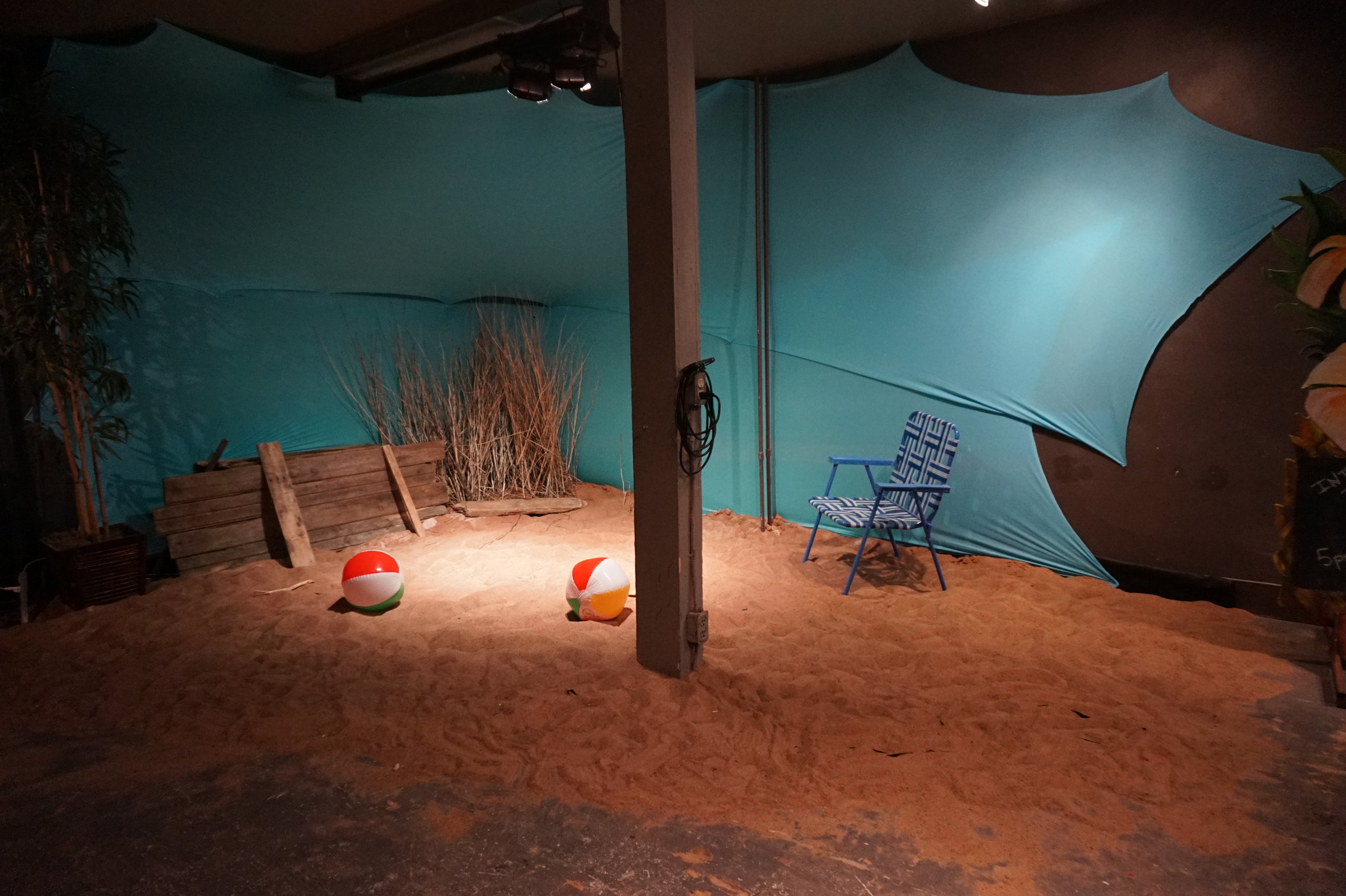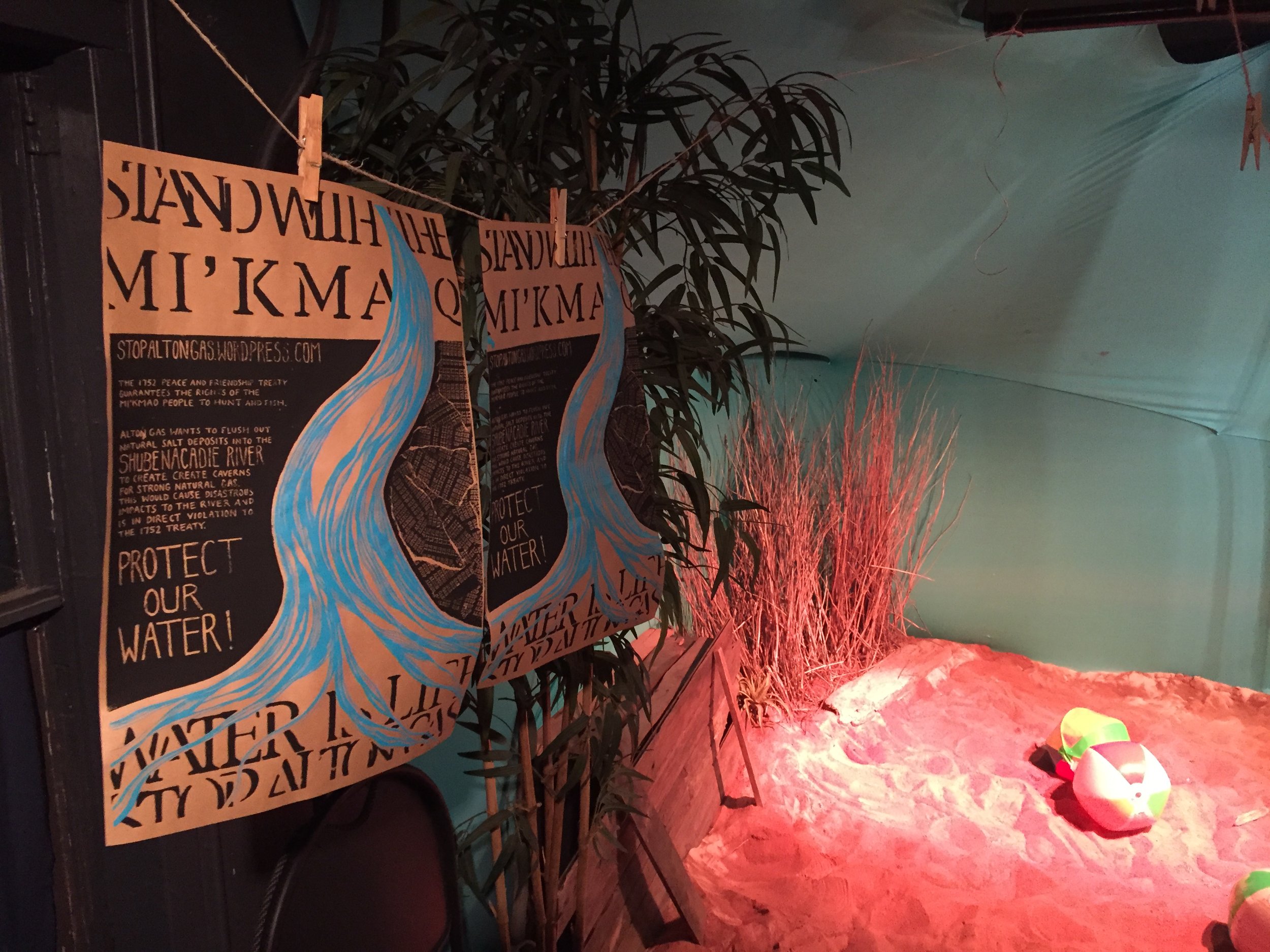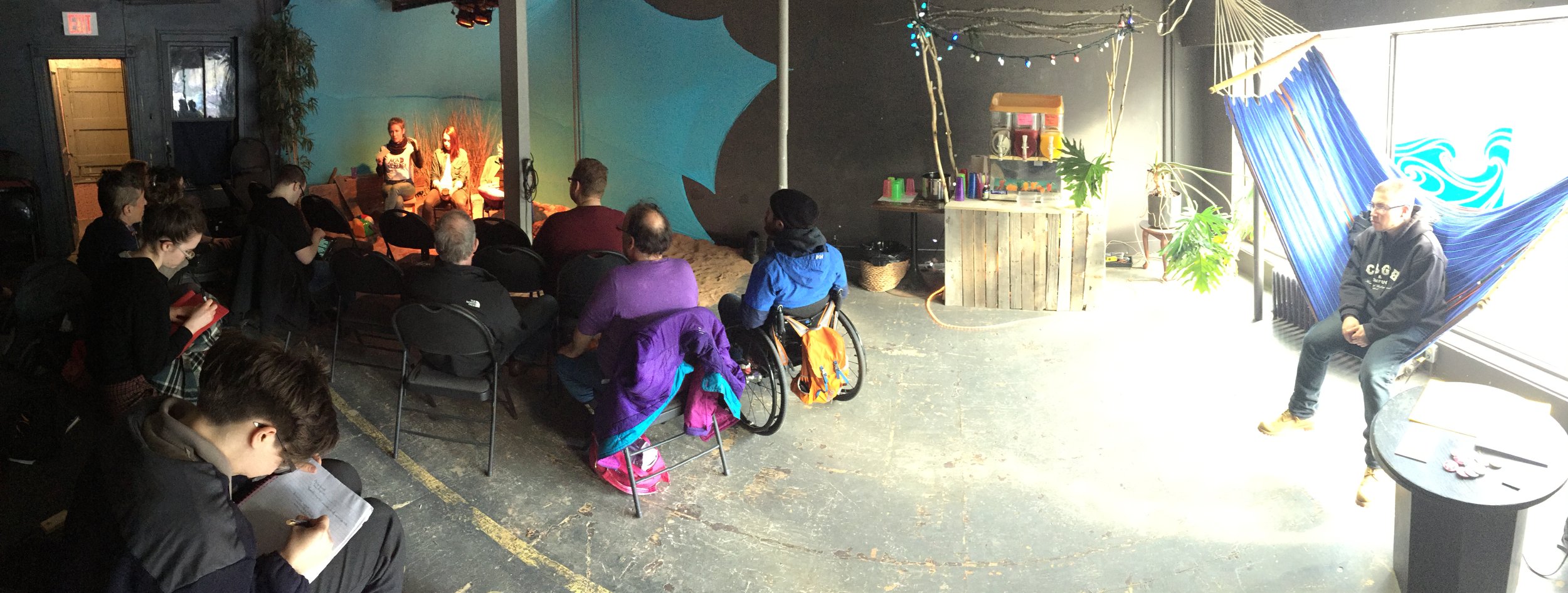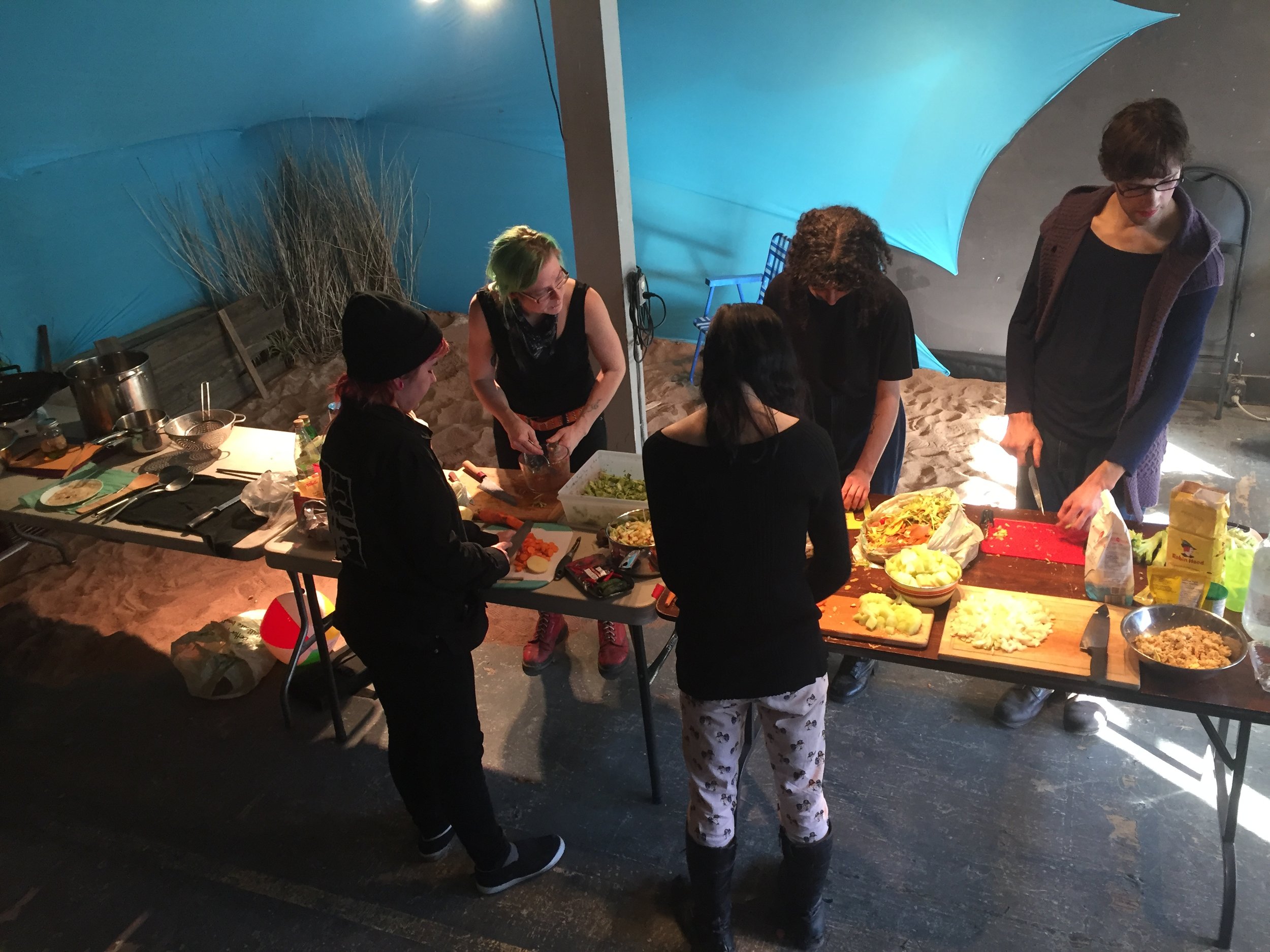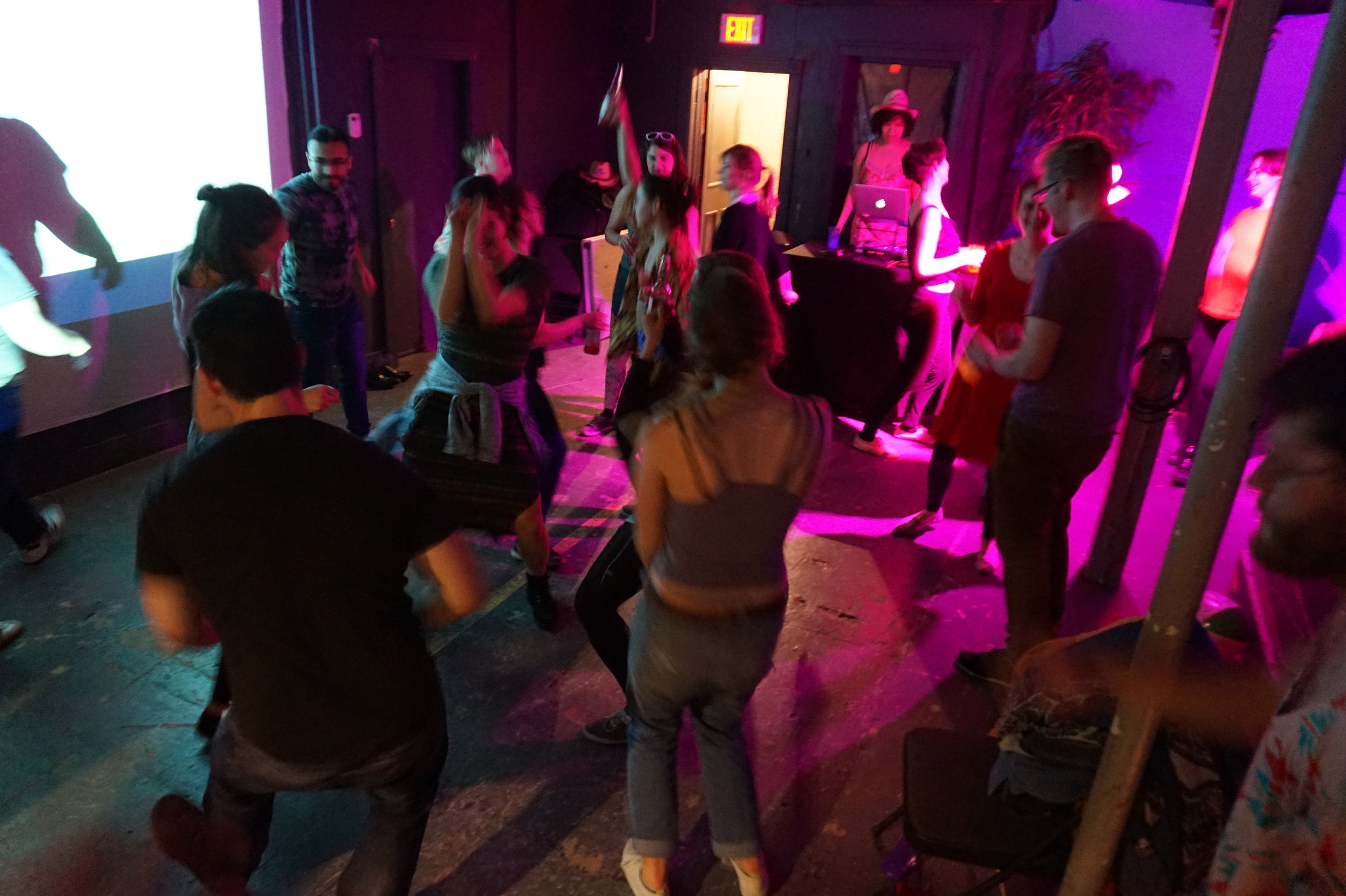The Commoners' Almanac: Spring Break From Capitalism (2017)
The Commoners’ Almanac: Spring Break From Capitalism is a project that seeks to enliven public discourse around the commons as a guiding principle for local activists and community organizers. Borrowing the form of the Farmers’ Almanac, the project culminates in an exhibition-cum-all-inclusive-resort; workshop series of 22 events, performances, meetings and panel discussions; and a (forthcoming) almanac publication. The spring break aesthetic detournes a desire for escape, innate to life within capitalism, to reimagine and reproduce relations guided by alternative values of the common good.
Join us at our all inclusive beach resort where all your troubles will magically melt away. Free from pesky bosses micromanaging your workflow and making inappropriate remarks about your body and personal life, a vacation with us will offer you time for a little R&R&R&R (rest and relaxation and resistance and revolution). Your massive student debts and monthly car payments will disappear (from view at least), giving you ample opportunity to work on your tan. And after a few glorious minutes of digging your toes into the sand of our smooth sandy beach, your crushing social anxiety will noticeably subside. Are the fears of rising rental costs and the impending climate crises getting the better of you? It might be time for you to swim over to our beach-side bar and try one of our non-alcoholic Daiquiris - “Sunny Vitamin D” for a long winter complete with real Vitamin D, or “¡Ya Basta!” our revolutionary’s yerba matté slushie. No exploitative capitalist enterprises or colonial celebrations here, we offer a break from your day-to-day oppressive monolithic super-structures. You can forget all about the cold dark shadow of misogynist authoritarianism that’s cast clear across the globe inciting fear and hate and violence when you and your friends relax in one of our hammocks under our daylight spectrum simulating lights.
THE COMMONS
In recent years, the notion of the commons has emerged as a an idea that can unite leftist struggles against the neoliberal austerity politics and capitalist exploitation which ravage the fabric of our society and communities. The term itself stems from european pastoral lands on which peasants grew crops and grazed livestock. These lands served the common good in that they benefited community members equally and were managed collectively by that community. The dawn of our capitalist economy comes at a time when the commons were enclosed by private interests, and peasants were evicted from those lands, forcing them into vagabandage (punishable by death under Henry VIII) or wage labour (losing the ownership of the means of production). The expansion of the capitalist economy also fueled colonial expansion to the “new world”, where first nations societies were expropriated of their land, and the concept of land as private property was introduced. Today, enclosure of the commons take many different forms such as the displacement of racialized and poor communities from their neighbourhoods, the extraction of fossil fuels that contributes to the irreversible warming of our climate, the eradication of traditional languages and cultures, the commodification of the education system and enormous quantities of un-payable debt accumulated by students, the war on unions and the precariatization of the labour market, etc.
Commoning, the process of unlearning individuality, the laws of austerity, and capitalist greed, and making initiatives, organizations and projects for the collective good is hard to do and is often at odds with our daily logic. (For example, we often resort to individualist efforts for our survival when really what we need more of is collective efforts. AirBnB is one example of this - in order to pay our rent, we offer a room on AirBnB which raises the real estate value of the neighbourhood and makes rent more expensive for our neighbours and ourselves. Housing coops would be an example of a collective housing initiative that is based on the collective good rather than individual gain.) Commoning is resistance against practices that pit us against each other, and relearning how to trust each other and work together. So this project works as a pedagogical intervention and animation into the social mindset to support, share, critique and question the value of the commons and commoning in our lives.
THE FARMERS’ ALMANAC
The tradition of farmers’ almanacs dates back to 1639 with the publication ofthe New England Almanac in Cambridge, Massachusetts. Over the centuries, many different publishers have produced almanacs which publish information, poetry, articles, statistics , stories, jokes, interviews, illustrations and meteorological and astrological charts and predictions relevant to farm life. They are compendiums of tips and tricks useful to farmers and gardeners anticipating the problems, environmental or otherwise, of the future.
The farmers’ almanac is a text for people who have a close relationship to the land. Generally published annually, almanacs hold a close relationship to their particular moment in time in that they anticipate the challenges of the coming year; they look forward. Almanacs also come with the implication of functionality and usefulness and are produced cheaply and distributed widely. These aspects of the farmers almanac make it a good choice for an art form for commoners. For example, the commons also has it’s roots in land-based politics, communing is a principle to that resonates with the economic and political climate particular to our time, and an almanac is to anticipate the challenges the reader will face in the future. The Almanac is primarily, but not exclusively, a functional text. This is the form my printed matter multiple will imitate.
THE COMMONERS’ ALMANAC
The Commoners’ Almanac is a merger of the form of the farmers’ almanac with the concept and practice of commoning. It starts as an exhibition of art objects that function as staging for a series of participatory events. These workshops, performances and meetings offer the public a site for discourse around commoning. The exhibition grows to include documents from and documentation of events and participant contributions. Once the exhibition closes, all materials are compiled into a printed matter multiple which distributes the content to a secondary audience, as well as being an art object in of itself.
Building on the discourse of artists, activists, change makers, and commoners, The Commoners’ Almanac serves to share tips and tricks of commoning, spread relevant ideas and initiatives, and house artistic offshoots that sprout from my research. The Almanac is a conceptual umbrella under which many works grow. They take the form of text pieces, videos, interviews, performances, prints, public meetings and discussions, rallies, etc. In some cases, guest presenters facilitate workshops or events.
"‘The common’ is the name we give to that almost magical dynamic, shifting, living collaborative relation that exists between people. In this sense, ‘common’ is more of a verb than a noun - it doesn’t just refer to those things we hold in common, it refers to the processes and procedures by which things and spaces become common, or remain common, the way commons are produced and reproduced through people’s actions and relationships. That is, the commons are both real things that we hold in common and also a quality of the imagination, a way of interpreting and understanding the world around us”.
-Max Haiven
"A commons is a property, a practice or a knowledge that is shared by a community. Our survival depends on many different kinds of commons: biophysical commons like rocks, soil, sunlight, water and air, and plant and animal ecologies; cultural commons like language, a musical heritage, sacred symbols, and artworks; social commons like educational, health and political systems; and knowledge commons like indigenous ecological knowledge, and scientific and technological advancements.”
-JK Gibson-Graham
PART ONE: Cartography of the Commons (2015)
Cartography of the Commons is a research project that set out to map the biophysical, cultural, social, and knowledge resources that are shared in common in Halifax, and to feature the people who maintain those common assets. Over four weeks I interviewed over 20 people who commit themselves to keeping the commons strong, accessible and resistant to enclosure. I wanted a project that would come from a creative position rather than a critical one, and one that would build on my thinking about the commons and anchor that thinking in tangible Halifax-specific research. The original hope of the project was that it would serve to introduce new people to the already existing commons around town.
Some of my guiding questions were:
What/where are the commons in Halifax and how vulnerable are they to privatization and enclosure? Who maintains the commons and what is the mindset of a commoner? (What do they value? How do they live their values? How do they navigate competing values? How do they reproduce their values? What narratives reproduce their values, and what competing narratives do they face?) How can/should we represent the commons? What’s the relationship between capitalism and racism, patriarchy, ableism, etc? How are (or aren’t) commoners making resources accessible to all?
I transcribed sections of 18 of the interviews and compiled them in a 48 page publication. I also took some key quotes and placed them in a 5 layer screen print. I folded the print up like a map and tucked it into the back of the publication. I donated three copies of the publication to the Halifax Public Library for their archive, for reference and for circulation.
Thanks to the Roberts' st Social Centre for their awesome support.

